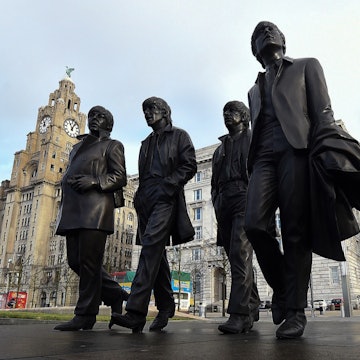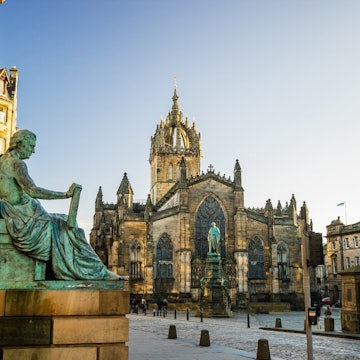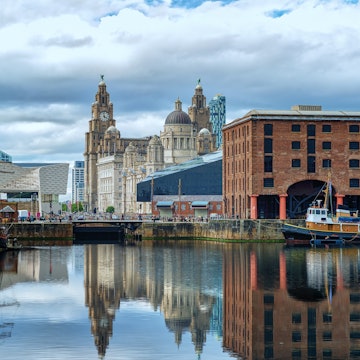

The buildings known as the Three Graces are among Liverpool's world class architecture. SimonD02 / Getty Images
Best known as the home town of the Beatles, the English city of Liverpool has another appealing claim to fame – the architecturally striking buildings which tell the stories of the city's past. From Queen Anne style to Brutalism via Neoclassical and industrial Victorian, Liverpool’s bricks-and-mortar record of local history earned it Unesco World Heritage status in 2004 and fascinates hundreds of thousands of visitors every year.
The city is second only to London for having the most listed (nationally protected) buildings in the UK and to get a taste of its architectural wonders, here's our guide to some of the best-preserved pieces from the past.
Bluecoat Chambers

Believed to be the oldest building in the city centre (built 1716), The Bluecoat is a former school turned arts centre – the UK’s oldest, in fact. It is a striking H-shaped building, constructed in a variation of Queen Anne style, with double-pile rooms, a pediment at the front, grand columns, quoins at the corners of the brown brickwork and round-arched windows instead of traditional sash. A modern extension and interior renovations have made room for the performances and exhibitions that take place here.
Liverpool Town Hall
The Grade I listed Liverpool Town Hall is a spectacular example of Georgian architecture. First opened in 1754, it still stands as a showcase of Georgian decorative style (despite various subsequent additions and alterations) and as a symbol of Liverpool's booming mid-18th century economy, a boom partly made possible by the slave trade in which the city would become the dominant player. Key features to look out for include the incorporation of Classical design principles (pillars, columns, domed roofing and arches), the embellished stone frontage, the building's symmetry, the sash windows (the Georgian equivalent of air-conditioning) and epic chandeliers. It is still used by the council, but also holds events and offers public tours at least once a month.
St George's Hall
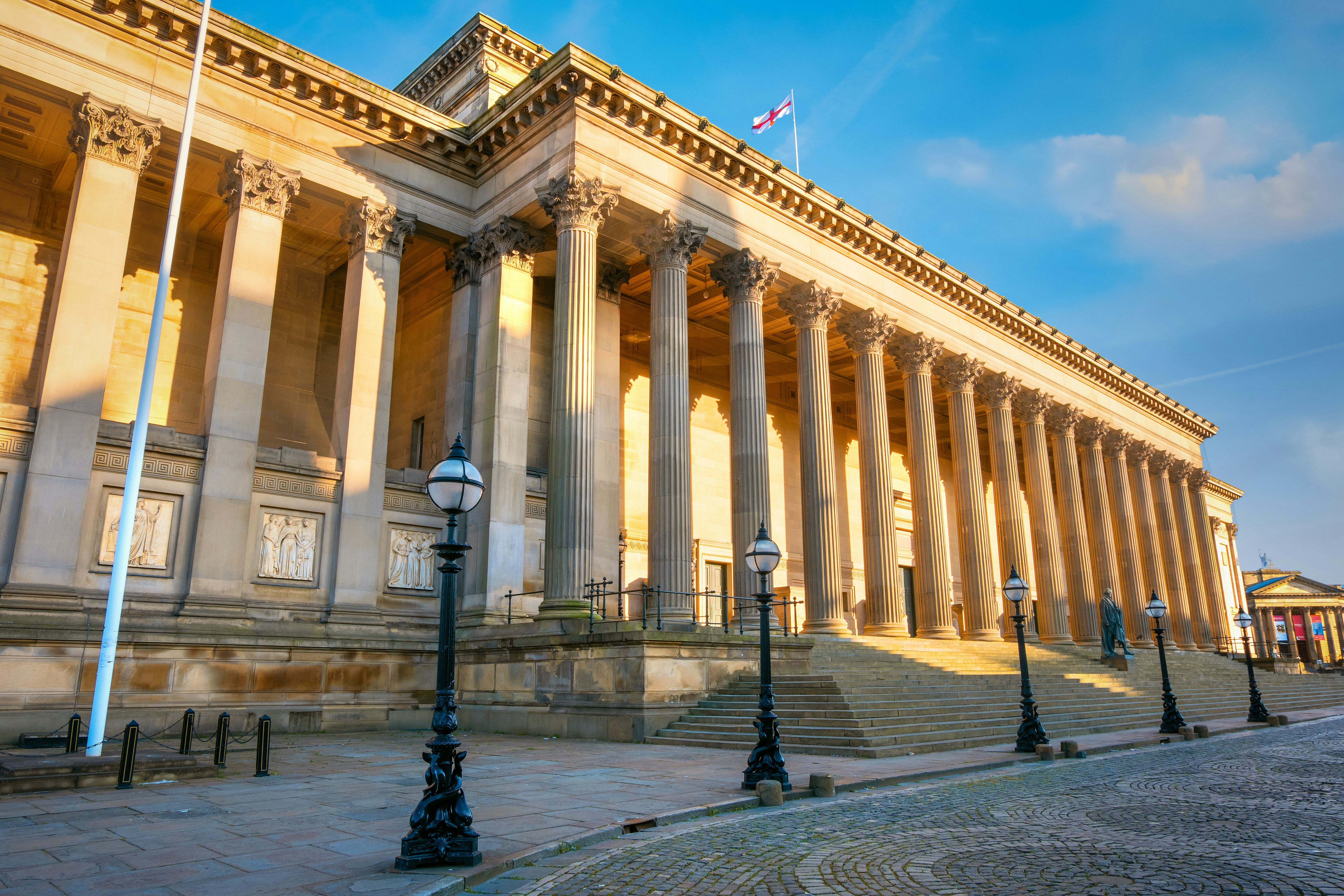
Offering an impressive welcome for those arriving at Lime Street train station opposite, St George’s Hall is another Neoclassical Grade I listed building of imposing proportions. Opened in 1854 on the site of the former Liverpool Infirmary, the hall was purpose-built to serve a variety of purposes (concerts, law courts, grand dinners), which explains why the rooms and the flight of stairs at the entrance are so wide.
Its legal uses meant that it needed to have a certain formality to it, so nods to Greek and Roman architecture were used to add grandeur – Corinthian columns, statues of ancient gods, sweeping archways and lavish interior decorations to name but a few. While the law courts now operate elsewhere, the building is still a major focal point for the city, with cultural events and community gatherings happening here all year round (plus the occasional wedding).
Albert Dock
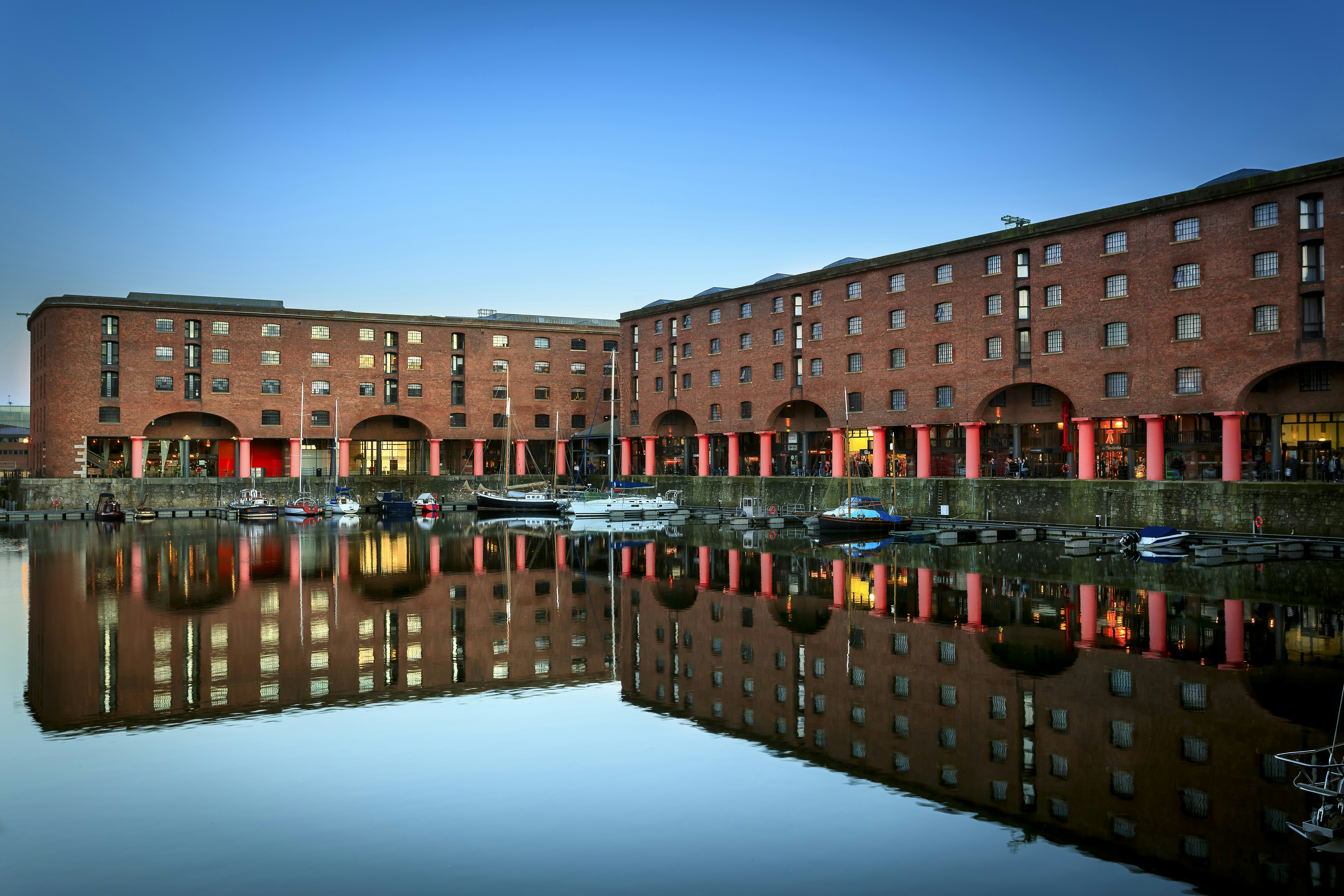
Opened in 1846, the Albert Dock was once at the centre of world trade. Five-storey fireproof warehouses built from cast iron, brick and stone made it possible for traders to safely store their goods, while the open loading bays halved the time it took to unload each arriving ship’s cargo – innovations that helped propel Liverpool to the top tier of global ports for the rest of the 19th century.
During early World War II, it was a docking station for small warships, but in 1941 it took a beating in the Blitz and lay empty and in a state of disrepair until a major renovation project in the 1980s. Current inhabitants include Tate Liverpool, The Beatles Story, historical museums (such as the Merseyside Maritime Museum and the International Slavery Museum), and dock-side streets lined with swanky bars, restaurants and music venues.
The Three Graces

Three landmarks on Liverpool's waterfront Pier Head are collectively known as the Three Graces and act as emblems of the city as a whole: the Royal Liver Building, the Cunard Building and the Port of Liverpool Building.
The Royal Liver Building, constructed out of reinforced concrete in 1911, was built for the Royal Liver Assurance group, a company founded to support families who had lost a wage-earner. On top of each of its two clock towers is a mythical Liver Bird, one gazing over the River Mersey River, the other facing the city.
The Cunard Building next door, built in 1917 in an Italian palazzo style with some Greek flourishes, was the headquarters of Cunard Cruise Line, a major employer back in the days when Liverpool was a hub for trans-Atlantic sailings.
The final member of the trio, the Port of Liverpool Building, is in Edwardian Baroque-style, with an impressive dome (first conceived for the Anglican Cathedral) and ornate decorative elements. For a great view of all three, wander along the Albert Dock or climb to the top floor of the Museum of Liverpool.
Liverpool Anglican Cathedral
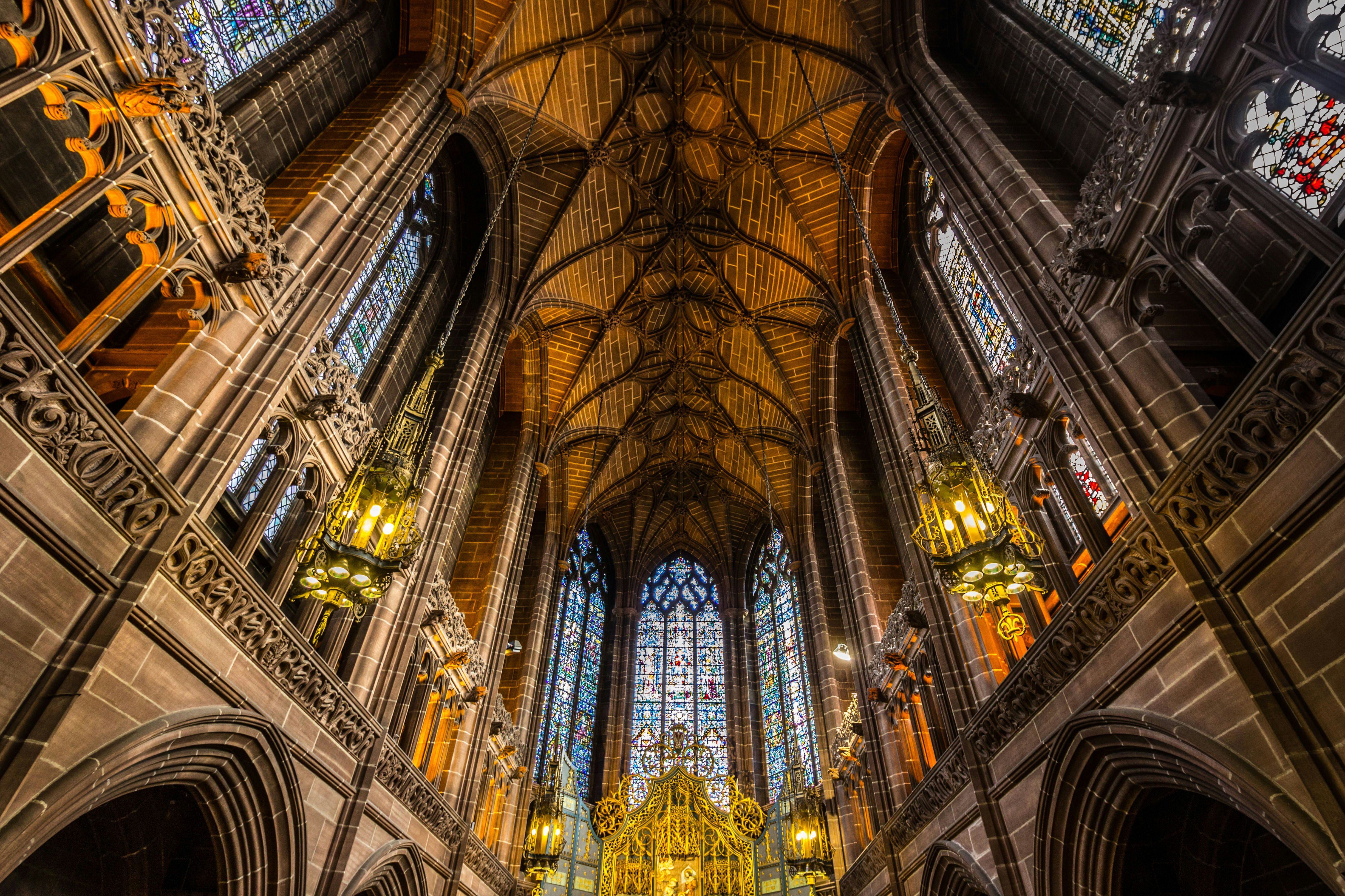
Also known as the Cathedral Church of Christ, Liverpool Anglican Cathedral looms large over the Georgian Quarter on Hope Street. A relatively modern building, this masterpiece of Gothic Revival took almost as long to erect as many of its medieval counterparts: construction took place between 1904 and 1978, beginning when Liverpool was at its peak and being completed during its post-war economic low point. At 189m, it is the longest cathedral in the world, and can also claim the highest and widest Gothic arches and the largest belltower. Despite its traditional design, the cathedral is keen to keep up with the times, something best shown by the Tracey Emin sculpture that runs below three grand stained-glass windows. Once you've had your fill of the vast, soaring interior, head up to the roof for views of Liverpool, the Irish Sea and even the mountains of Snowdonia in Wales.
The Metropolitan Cathedral of Christ the King
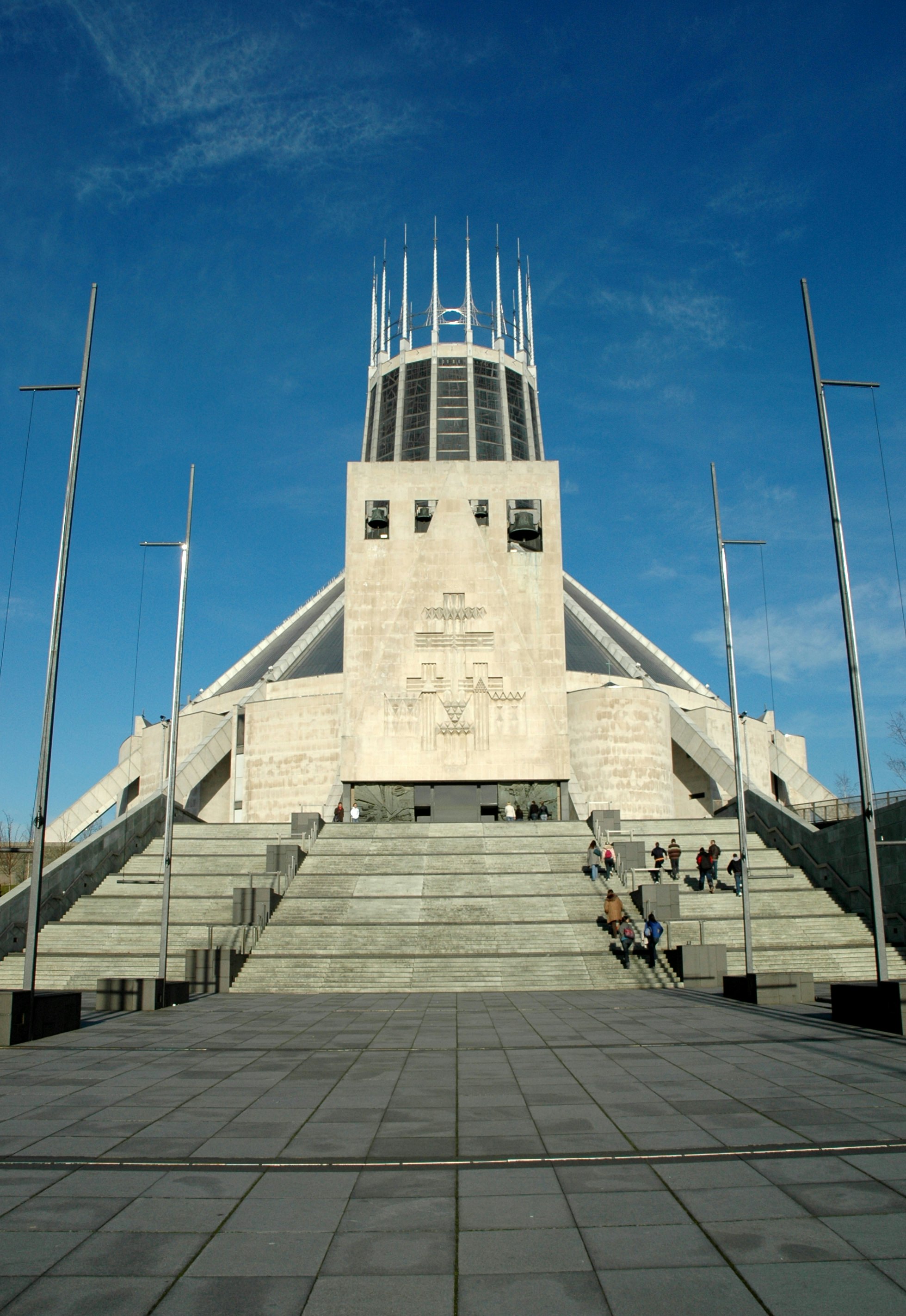
Facing the Anglican Cathedral at the northern end of Hope Street, the city's main Catholic place of worship has a very different look to it. The Metropolitan Cathedral of Christ the King is a building of its time, the 1960s. A conical concrete structure, surrounded by a truncated cone, it's supported by undisguised trusses and has a roof that is clad in aluminium and crowned with a ring of pinnacles. The cathedral as it stands today went up between 1962 and 1967 and was designed by Sir Frederick Gibberd, although two earlier architects, Edward Welby Pugin (son of the elder Pugin of Houses of Parliament fame) and Sir Edwin Lutyens (of New Delhi fame) had both come up with earlier designs for a church to meet the needs of Liverpool's growing Catholic population.
Lutyens’ Crypt, accessed down a spiral staircase, hides underneath the main cathedral and is all that was ever built from his plans. Finished in 1933, money constraints after World War II caused the rest of the work to stop after this bottom floor was completed. When Gibberd took over, he designed a circular ground floor with concentric pews facing towards a central 10ft marble altar, with access to the crypt below. It is a treat to explore, with fusions of traditional and modern stylings. There's also, somewhat surprisingly, an annual beer festival down there.
Liverpool ONE

In the 1990s and 2000s, the heart of the city was stalling following the decline in manufacturing, dock work and investment in the 1970s and 80s. To revitalise it, developers came up with Liverpool ONE – a huge complex connecting various parts of the city centre.
The open-air construction has a style that's sympathetic to both the city's historic architecture and its cultural vibrancy. Walking around, you see brickwork inspired by 1700s dockland Liverpool, curves inspired by the rounded lines of nearby Georgian windows, bright splashes of colour calling to mind Liverpool’s artistic vitality and the occasional borderline-Brutalist wall. Having revitalised the centre of Liverpool by bringing the cultural quarters, shopping areas, leisure outlets and residential spaces together for locals and tourists to enjoy, it makes a fitting end to your historical, architectural journey of this fascinating city.
Make the most of your travel with sightseeing tours and activities from our trusted partners.
https://shop.lonelyplanet.com/products/england-travel-guide-9








